Easy Creamy Skillet Mac and Cheese w/ Gouda
This easy homemade mac and cheese is tossed in a velvety sauce made with cheddar and smoked gouda, and quickly broiled for a golden crisp top.
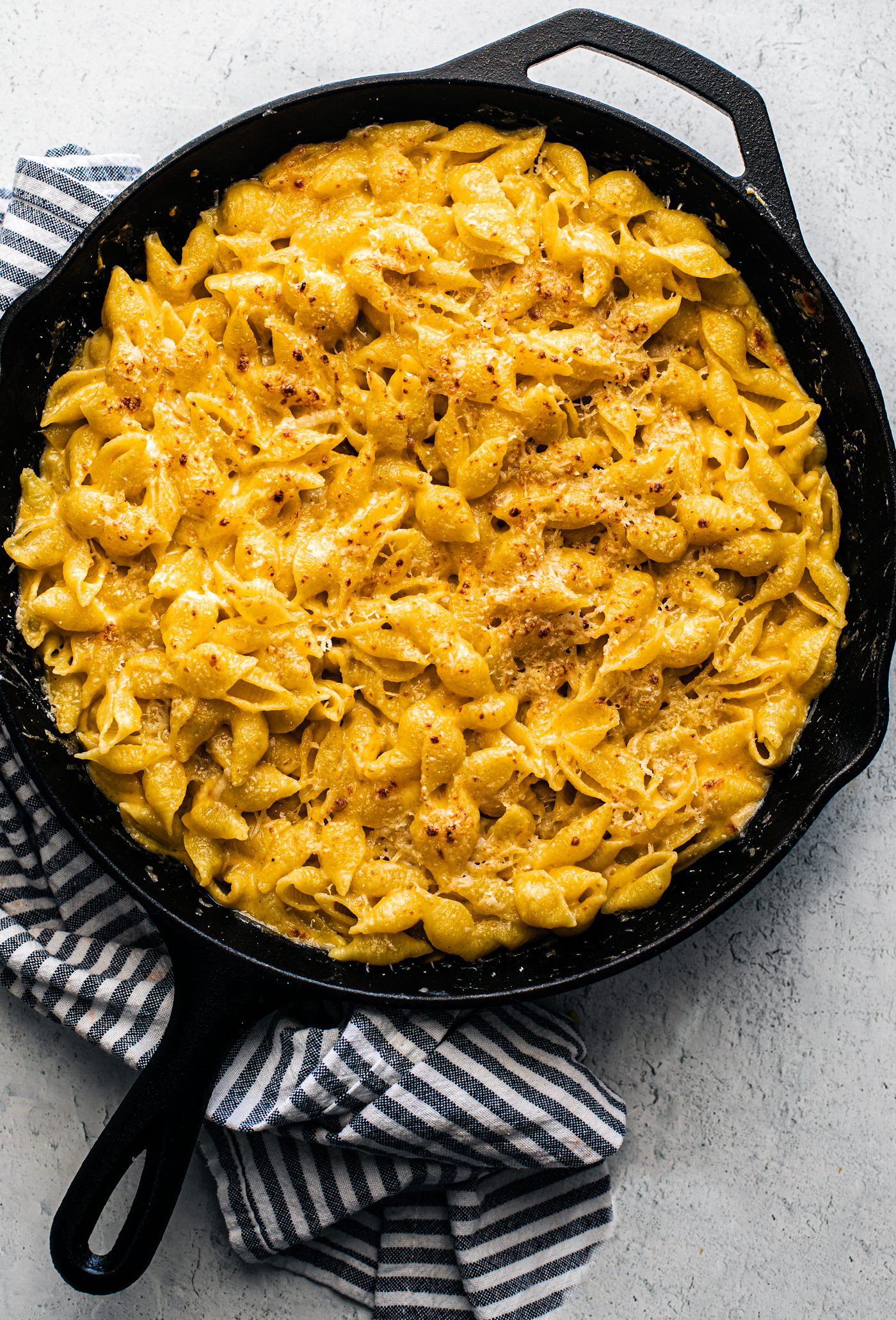
Table of Contents
Why You’ll Love This Skillet Mac and Cheese
This has been my go-to mac and cheese for years and it’s received a lot of acclaim from family and friends. It’s rich, creamy, and uses sharp cheddar and smoked gouda which take the flavor to a whole new level of awesome.
Best of all, it’s really simple to throw together! And it leaves room for preferential tweaking.
The Best Cheese to Use in Mac and Cheese
There are a lot of delicious cheeses out there, but some work better for mac and cheese simply because they melt better. Obviously, the melt factor is an important one. Here are some of the best cheeses to use for your homemade mac and cheese:
- Medium Cheddar. Cheddar is my personal favorite cheese in general, so it’s a staple in any mac and cheese I make. It has a sharper flavor than mild cheddar, but melts better than sharp cheddar, making it a happy medium.
- Gouda. This cheese has a pretty mild flavor and melts easily, so it’s a great addition to your mac. I opt for smoked gouda because I love the warming flavor it offers.
- Parmesan. This salty cheese adds a lot of flavor. I prefer to grate just a bit on top of the mac prior to broiling though, since it crisps up nicely resulting in that subtle golden crust folks love to break through.
- Brie. When we think of brie, we think about baked brie topped with jams or melt-y brie grilled cheese sandwiches. But brie actually works well in a mac! Just imagine your noodles drenched in all of that gooey goodness.
- Havarti. If you want to have some fun with your mac, Havarti is a great choice because it comes in so many different flavors—like dill, chipotle, and horseradish—which will really jazz things up.
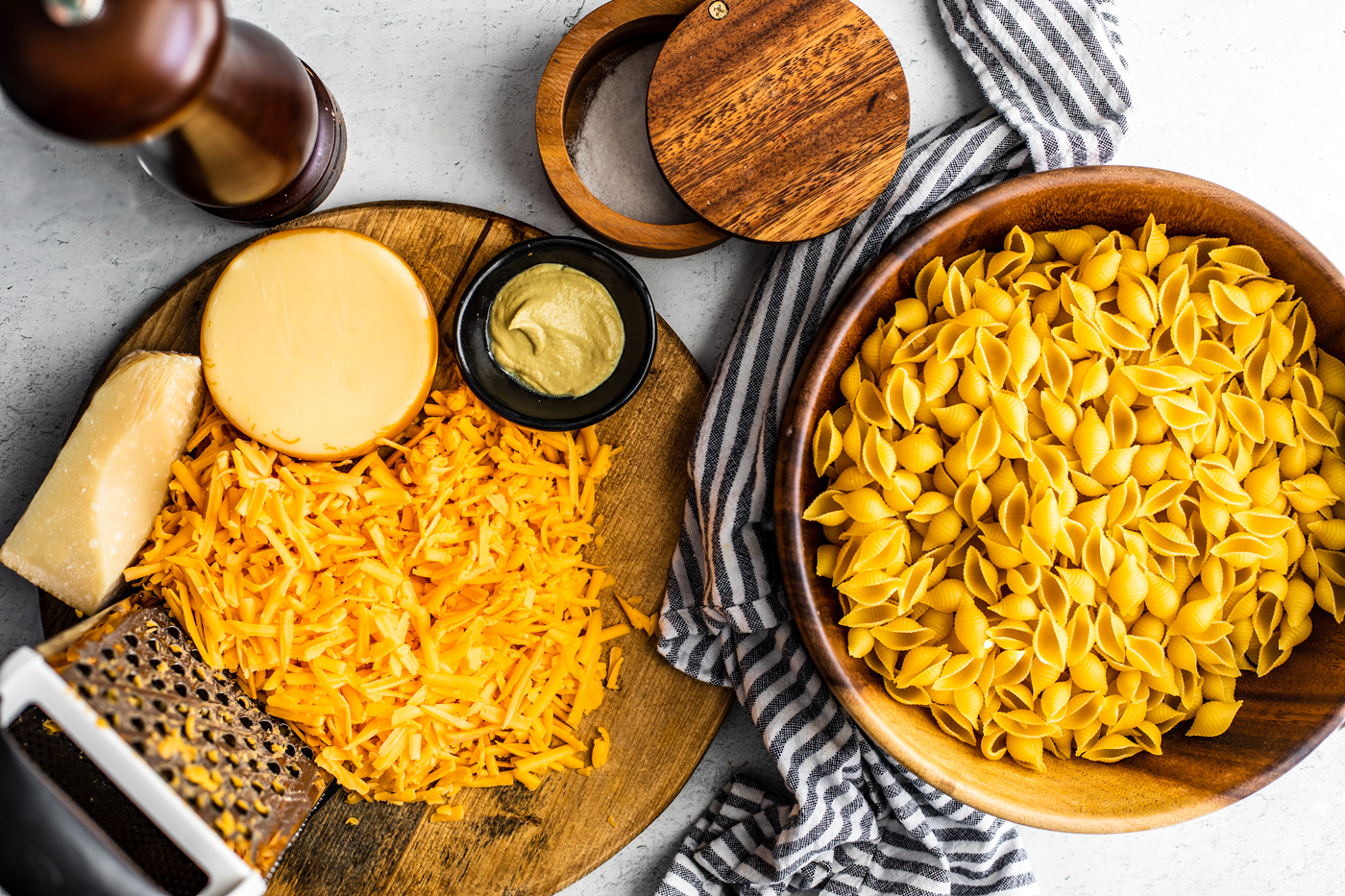
How to Make Mac and Cheese in a Skillet
- Cook your pasta. Salt some water and boil the pasta as per the directions on the package. When ready, drain and set aside.
- Make a roux. Melt the butter in the skillet over medium-high heat. Whisk in the flour bit by bit. As you whisk, the butter and flour will form a paste. This is the roux, and this is what creates that beautiful velvety texture for your cheese sauce.
- Add milk. Gradually whisk in the milk. It’ll start to bubble and as it mixes with the roux, it will become a thick white sauce otherwise known as Béchamel. (Congrats! You’ve just made one of the mother sauces in French cuisine. Wasn’t that easy?)
- Cheese it up! Add the grated cheese to your white sauce and stir it in. Keep stirring until it melts into a perfectly silky and gooey cheese sauce, and then stir in the Dijon mustard. Add some salt and pepper to taste.
- Toss in that pasta. Drain the pasta and add it to the skillet, then toss to coat. I love using shells because they’re like little scoops, cupping up some of that delicious cheese sauce into their little crannies.
- Top and broil. Once all of that pasta is coated with the cheese sauce, sprinkle the parmesan over the noodles and pop the skillet under the broiler for a few minutes or until the top of the mac has a slight golden crisp. Remove it from the oven and let it sit for a few minutes before serving.
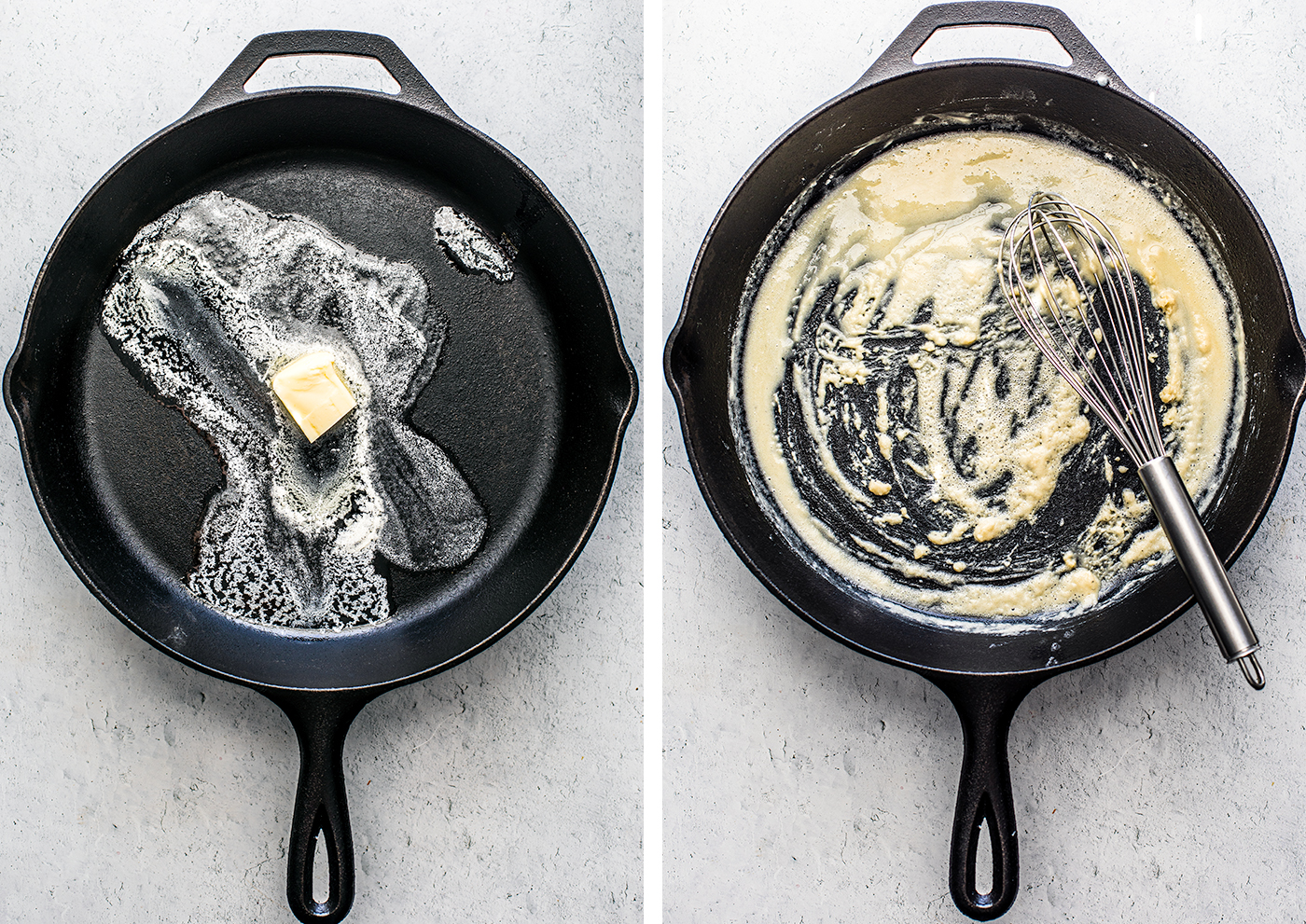
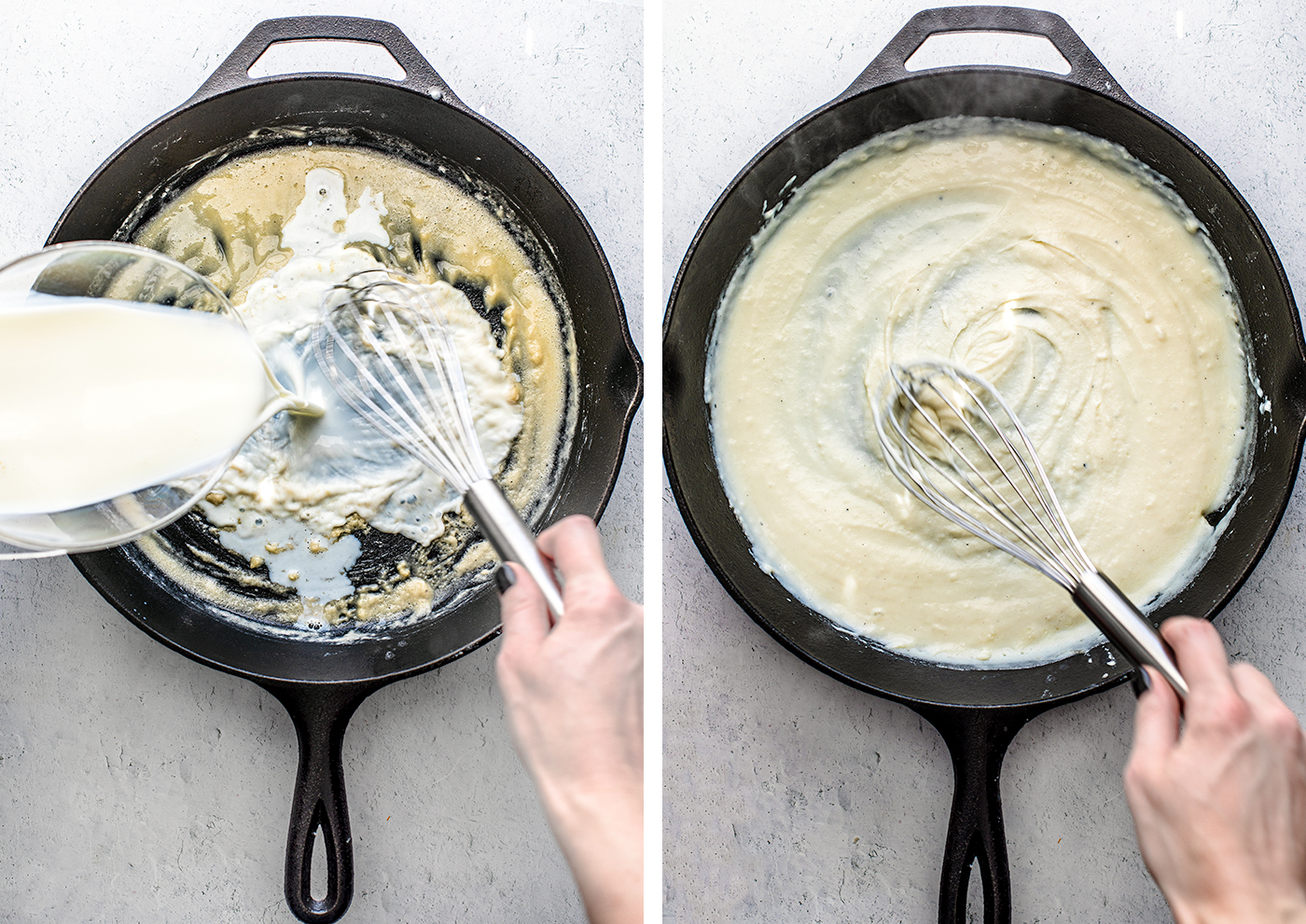
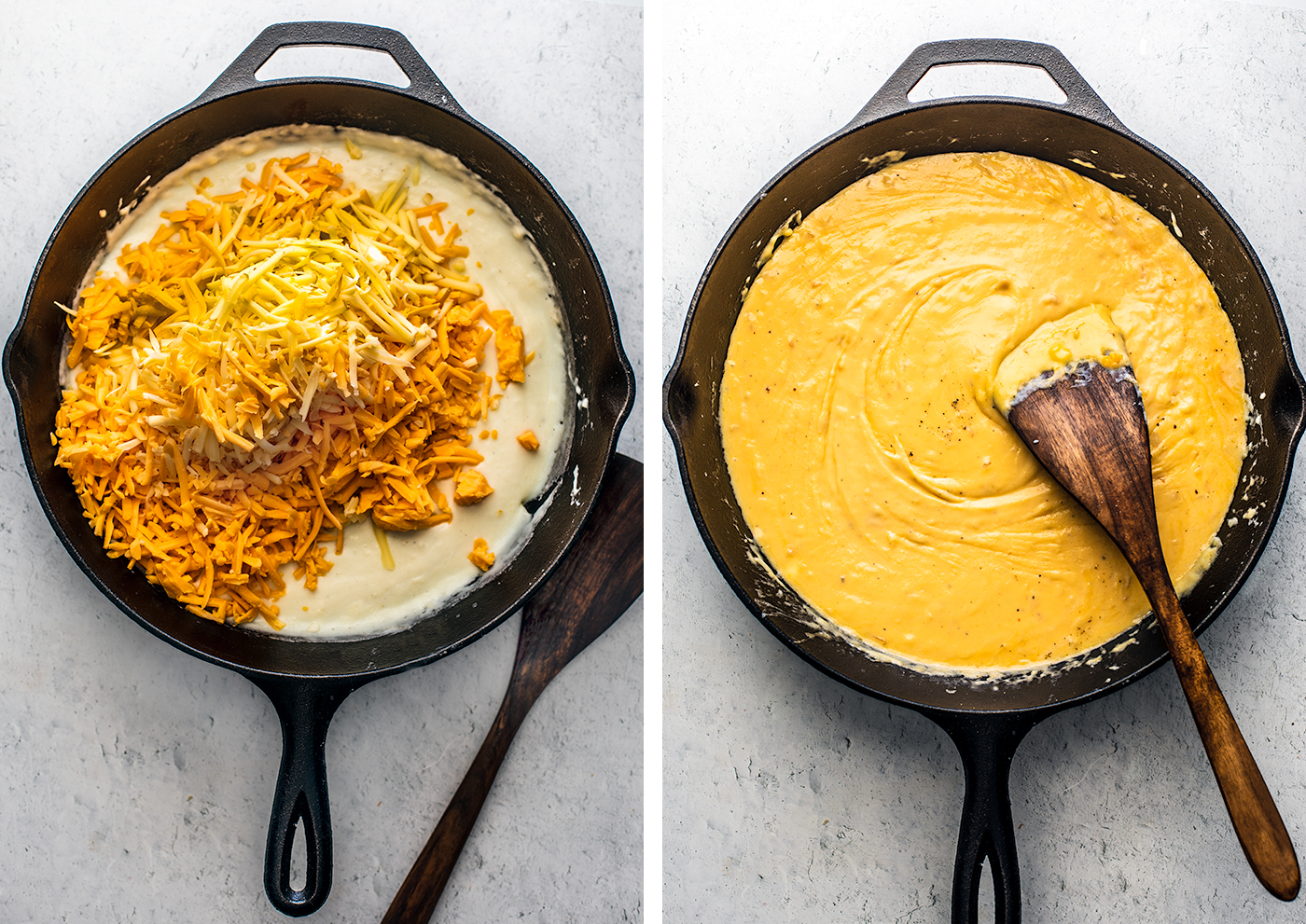
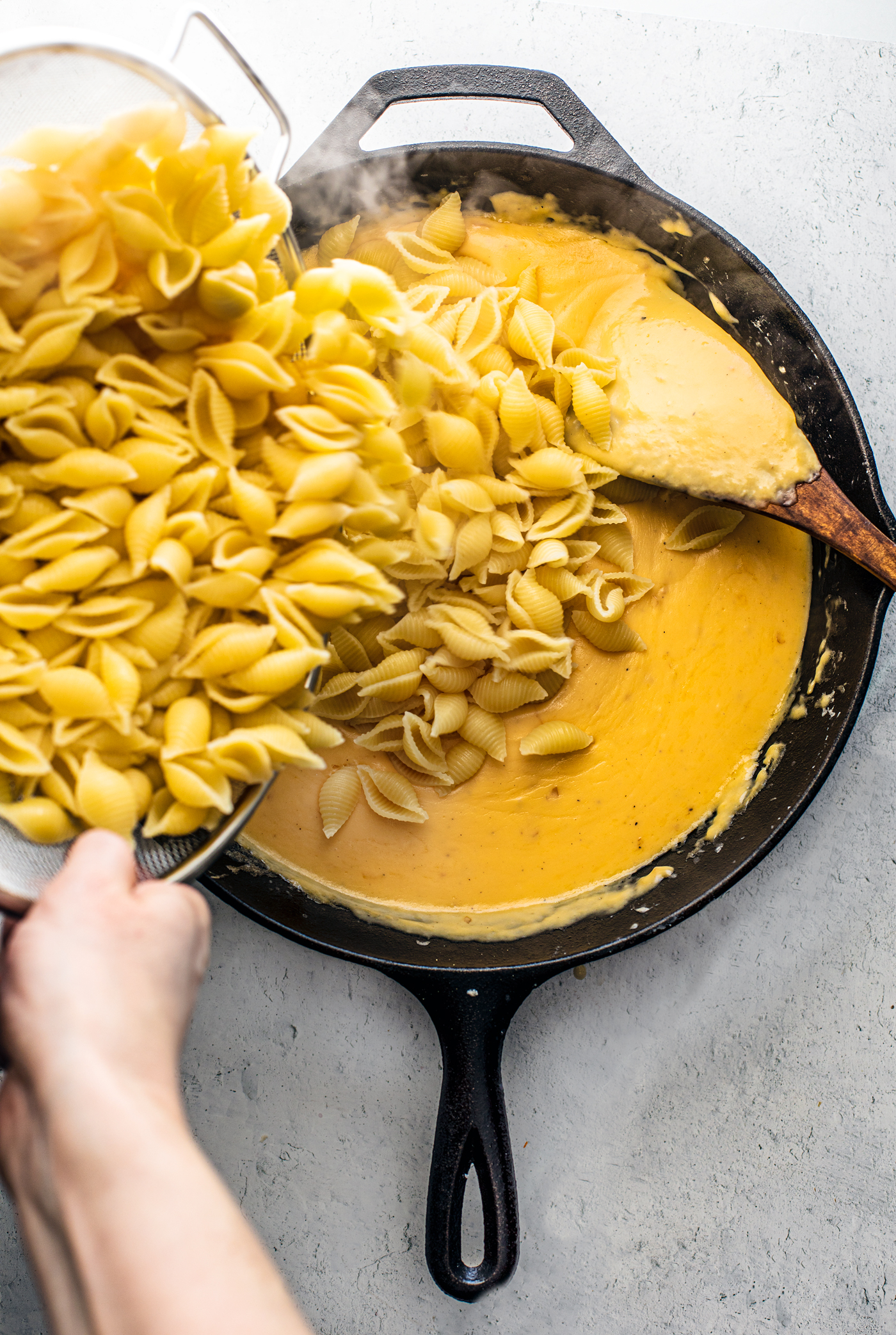
Useful Kitchen Tools
Recipe Tips
- Don’t skip out on the roux! Not all mac and cheese recipes call for a roux, but I think it’s an essential component in creating the perfect velvety smooth cheese sauce.
- 16 oz of cheese per 1 lb of pasta is the ticket. I suggest grabbing 8 oz of two different kinds of cheese for a nice flavor profile.
- Stick with small pasta shapes that have nooks and crannies that will hold the cheese sauce; you want a mouthful of cheese with every bite! Shells are perfect, as well as rotini and elbow macaroni.
- If you find your cheese sauce is too thick, you can stir in more milk, but only add a bit at a time. You do not want to add too much liquid, otherwise your mac will end up soupy. You want a rich thick and creamy sauce.
- Reheated mac and cheese is pretty underwhelming, but there’s a trick to getting it as creamy and dreamy as freshly made mac. Put your portion of mac and cheese into a saucepan and heat it over medium heat on the stove. Add about 1/4 cup of milk and stir. As everything heats up, the milk will loosen up the cheese sauce and it’ll all thicken up and become saucy and gooey again. Add splashes of milk as needed until you get the consistency you want.
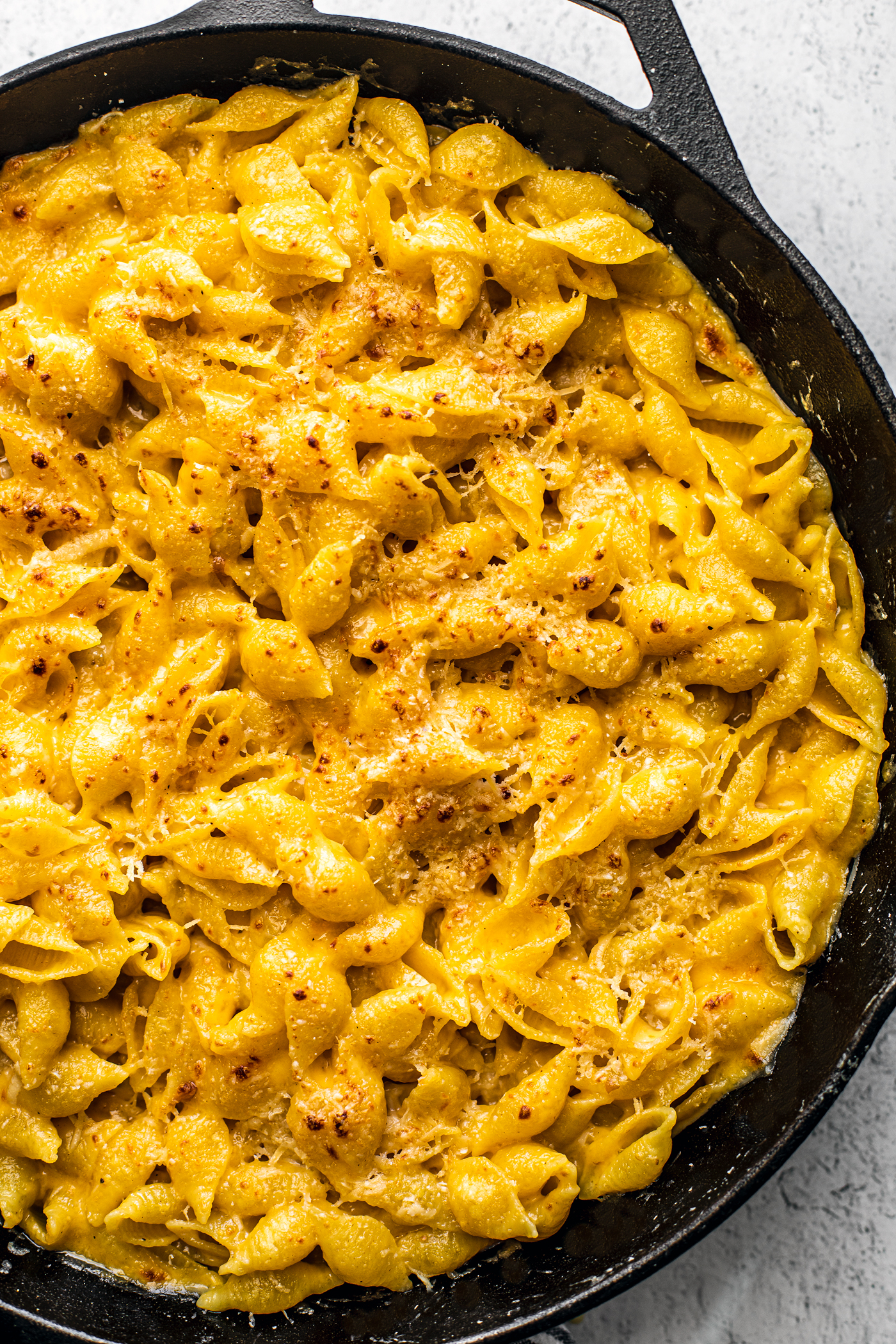
What to Serve With Mac and Cheese
Let’s be real: mac and cheese can totally be enjoyed on its own as a meal. But if you’re treating it as a side dish, you’re in luck, because this particular mac goes well with pretty much anything—making it a perfect potluck addition!
- Slow Cooker Pulled Pork
- Easy Air Fryer Broccoli
- Beer Butter Mushrooms
- Slow Cooker Buffalo Chicken
- Tender Ground Turkey Meatloaf
- Air Fryer Turkey Breast
- Roast Turkey Breast
- Sheet Pan Turkey Sausage and Peppers
Have You Made This Recipe?
If you enjoyed this recipe, please consider leaving a STAR rating & commenting below with feedback!
You can also show off your creations on Instagram by tagging @killing__thyme
More Cheesy Recipes You’ll Love
- Herb & Garlic Cheese Pizza
- Roasted Hatch Chile Grilled Cheese
- Baked Chicken Tacos
- Ground Turkey Lasagna
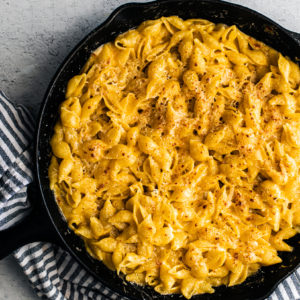
Skillet Homemade Mac and Cheese
Ingredients
- 1 lb pasta shells Elbow macaroni or rotini also works
- 8 oz medium sharp cheddar, shredded
- 8 oz smoked gouda, shredded
- 1 cup milk, plus more as needed
- 1/4 cup Parmigiano-Reggiano or Pecorino Romano, finely shredded
- 2 TBSP butter
- 2 TBSP all purpose flour
- 1 TBSP Dijon mustard
- Sea salt and cracked black pepper, to taste
Instructions
- Cook your pasta according to the directions on the package; cook until al dente. When done, drain and set aside. While the pasta cooks, start your cheese sauce.
- Melt the butter in the skillet over medium-high heat. Once melted, gradually whisk in the flour until the mixture turns into a paste (at this point, it's a roux).
- Slowly whisk the milk into the mixture. It'll start to bubble and thicken. Bring the heat down to medium.
- Sprinkle the grated cheese into your sauce and stir often until the cheese melts, turning the mixture into a perfectly silky cheese sauce. Then, stir in the Dijon mustard. Add some sea salt and pepper, to taste.
- Add the drained pasta to the skillet and toss to coat.
- Sprinkle the parmesan over the noodles and place the skillet under the broiler for a few minutes, until the top crisps to a slight golden color. Watch it closely so it doesn't burn.
- Remove the skillet from the oven and let it sit for a few minutes before digging in.

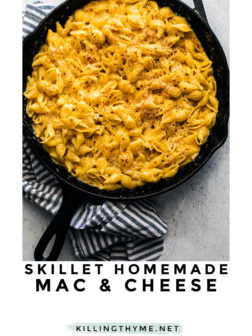

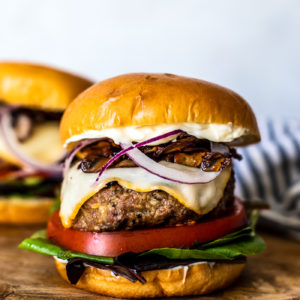
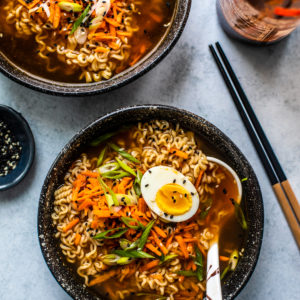
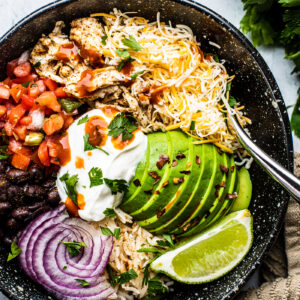
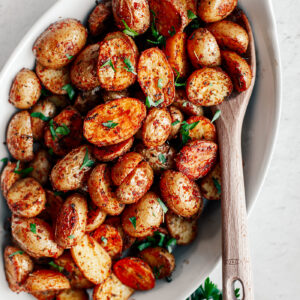
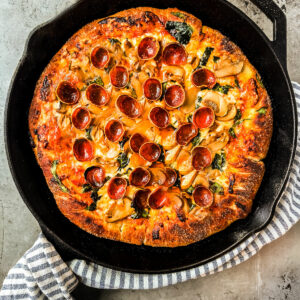
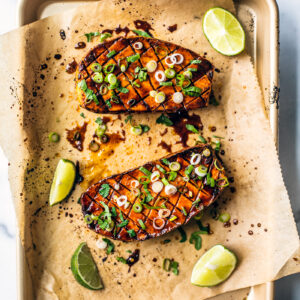


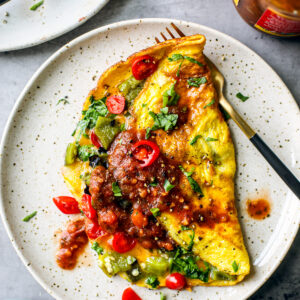
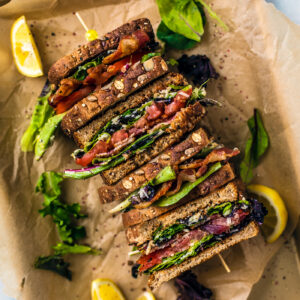
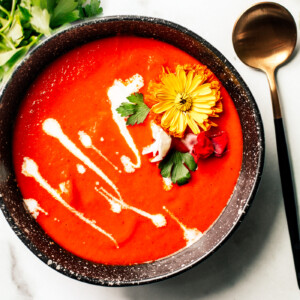

One Comment on “Easy Creamy Skillet Mac and Cheese w/ Gouda”
Pingback: Ultimate Air Fryer Chicken Nuggets - Killing Thyme